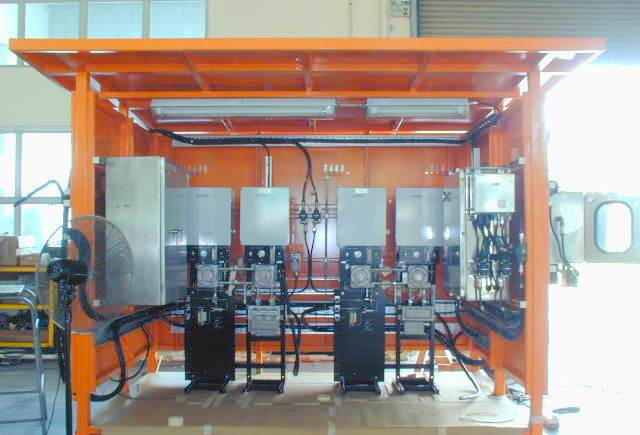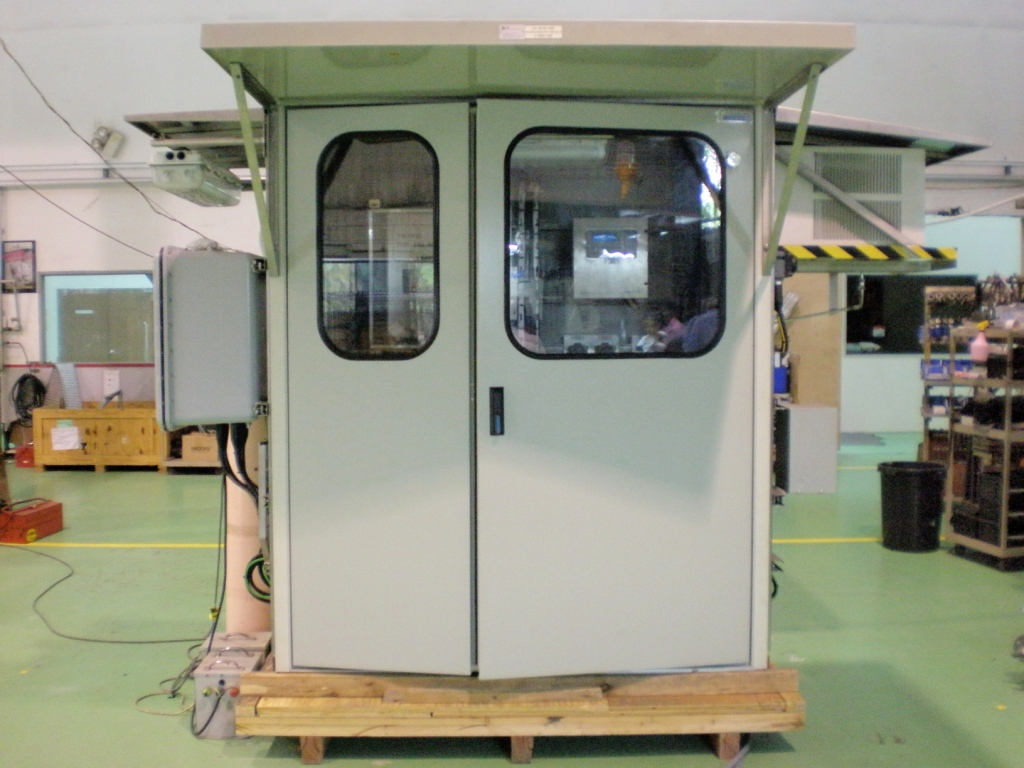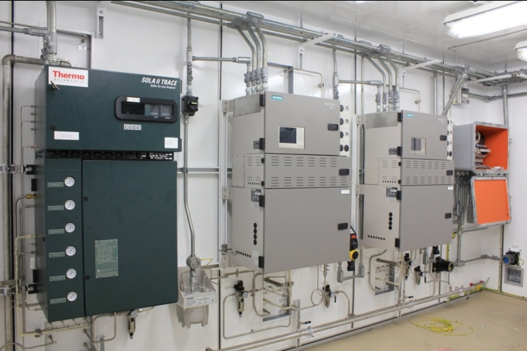on-line analyzer
Online analyzer is an instrument equipment used for real-time monitoring and analysis of various substance components or parameters, widely used in multiple fields. The following is a detailed introduction for you:
Working principle: Online analyzers typically use different analysis techniques and principles to detect target substances. For example, in online water quality analysis, common methods include optical analysis (such as UV visible spectrophotometry, fluorescence method, etc.), which determines the concentration of substances by measuring the absorption or emission intensity of specific wavelengths of light in the water sample; Electrochemical analysis methods (such as potentiometry, amperometry, etc.) use the electrochemical response between electrodes and substances in solution for measurement; Some online analyzers are based on physical principles, such as inferring the composition or properties of a substance by measuring its density, viscosity, refractive index, and other parameters.
Main types and application areas:
Online water quality analyzer 1:
Main types: including COD (Chemical Oxygen Demand) online analyzer, ammonia nitrogen online analyzer, total phosphorus online analyzer, pH online analyzer, conductivity online analyzer, etc.
Application scenarios: Widely used in fields such as environmental protection, wastewater treatment, and drinking water treatment. For example, in sewage treatment plants, real-time monitoring of water quality parameters such as COD, ammonia nitrogen, total phosphorus, etc. can adjust the treatment process in a timely manner to ensure compliance with discharge standards; Continuously monitor the water quality at drinking water sources to ensure the safety of drinking water.
Gas online analyzer:
Main types: such as sulfur dioxide (SO ₂) online analyzer, nitrogen oxide (NOx) online analyzer, oxygen (O ₂) online analyzer, carbon monoxide (CO) online analyzer, carbon dioxide (CO ₂) online analyzer, as well as volatile organic compounds (VOCs) online monitoring system 1.
Application scenarios: commonly used for industrial production process monitoring, atmospheric environment monitoring, etc. For example, in industries such as steel and chemical, real-time monitoring of various gas components and concentrations in exhaust emissions is necessary to control the production process, reduce pollutant emissions, and meet environmental protection requirements; In urban atmospheric environment monitoring, mastering the concentration changes of pollutants in the air provides a basis for environmental management and pollution prevention and control.
Industrial process online analyzer:
Main types: There are corresponding online analyzers for different industrial processes, such as oil composition online analyzers, multi parameter online analyzers, etc. in the petrochemical industry; In the pharmaceutical industry, there may be online analyzers for drug ingredients.
Application scenario: Applied to various stages of industrial production, used for real-time monitoring of key parameters and material components in the production process, ensuring stable product quality, optimizing production processes, and improving production efficiency. For example, in the refining process, real-time analysis of oil products is used to adjust process parameters in a timely manner, ensuring that product quality meets standards; During the pharmaceutical process, online monitoring of the composition of drug intermediates and finished products is carried out to ensure the quality and efficacy of the drugs.
Advantages:
Real time continuous monitoring: It can obtain monitoring data in real time without the need for frequent manual sampling and analysis. It can grasp the status changes of the monitored object at any time, detect abnormal situations in a timely manner, and take corresponding measures.
High degree of automation: generally equipped with functions such as automatic sampling, analysis, data processing, and transmission, reducing manual errors and workload, improving work efficiency and data accuracy.
Quick response: It can complete analysis and provide results in a short period of time, enabling operators to make quick decisions. It is very important for timely adjustments to production processes or handling emergencies.
Data recording and storage: capable of continuously recording a large amount of monitoring data and storing it, facilitating subsequent data analysis, statistics, and traceability, providing strong support for long-term quality control and management.
Considerations for selection:
Measurement accuracy and precision: Based on specific application requirements, select online analyzers with sufficient measurement accuracy and precision to ensure reliable monitoring data is obtained.
Measurement range: It is necessary to ensure that the measurement range of the online analyzer can cover the expected concentration or parameter range of the monitored substance, to avoid situations where it cannot be accurately measured beyond the measurement range.
Stability and reliability: The instrument should have good stability, be able to maintain stable performance during long-term operation, and reduce the number of failures and maintenance. At the same time, reliability is also crucial, and it is important to choose products that are of reliable quality and have been validated to reduce the risk of monitoring interruptions or inaccurate data caused by instrument failures.
Response time: For some application scenarios that require quick response, such as real-time control of production processes or responding to emergency situations, online analyzers with short response times should be selected to obtain data in a timely manner and take action.
Environmental adaptability: Consider the environmental conditions of online analyzers, such as temperature, humidity, pressure, corrosiveness, etc., and select instruments that can adapt to the actual environment to ensure their normal operation and service life.
Convenience of maintenance and calibration: The instrument should be easy to maintain and calibrate, with a simple and easy to understand operating interface and maintenance process, so that operators can perform daily maintenance and regular calibration, ensuring that the performance of the instrument is always in good condition. At the same time, it is necessary to consider whether the manufacturer provides timely technical support and after-sales service.
Cost effectiveness: Taking into account factors such as the price, operating costs (such as reagent consumption, energy consumption, etc.), and expected service life of online analyzers, evaluate their cost-effectiveness and choose products with high cost-effectiveness. But we cannot just pursue low prices and ignore the quality and performance of the instruments.









Please first Loginlater ~